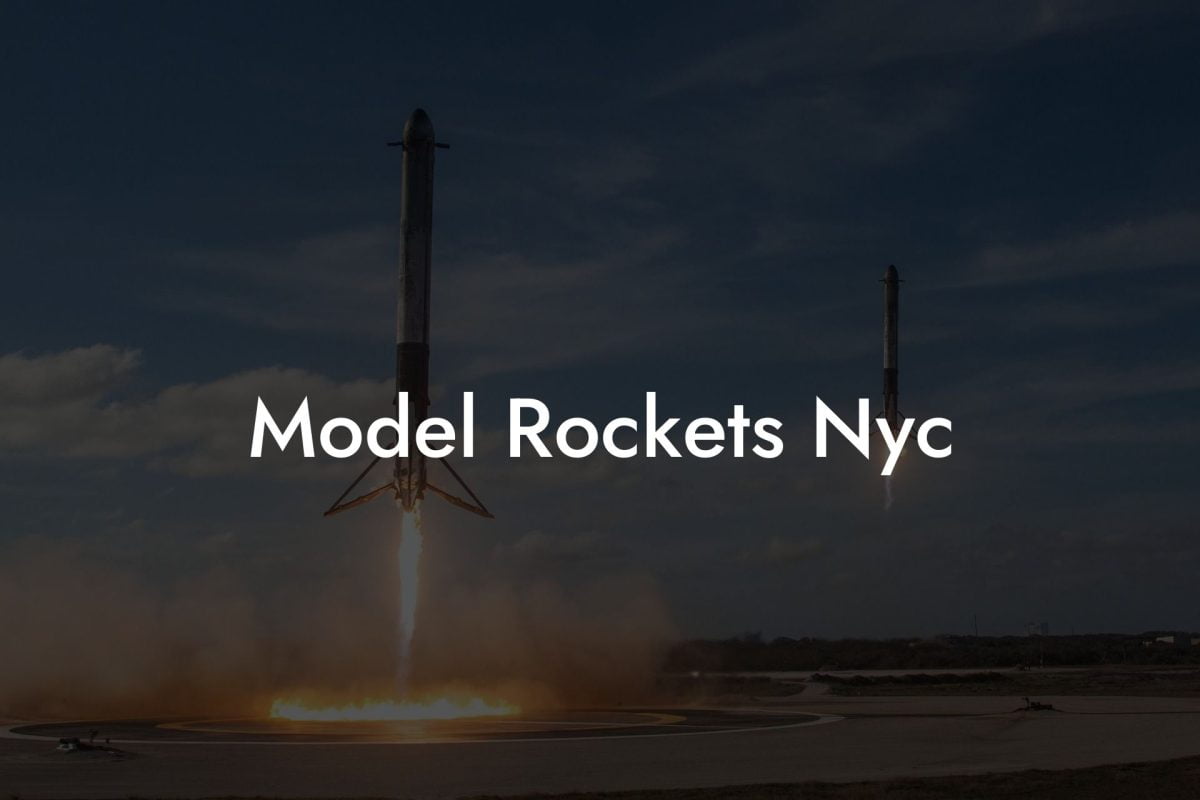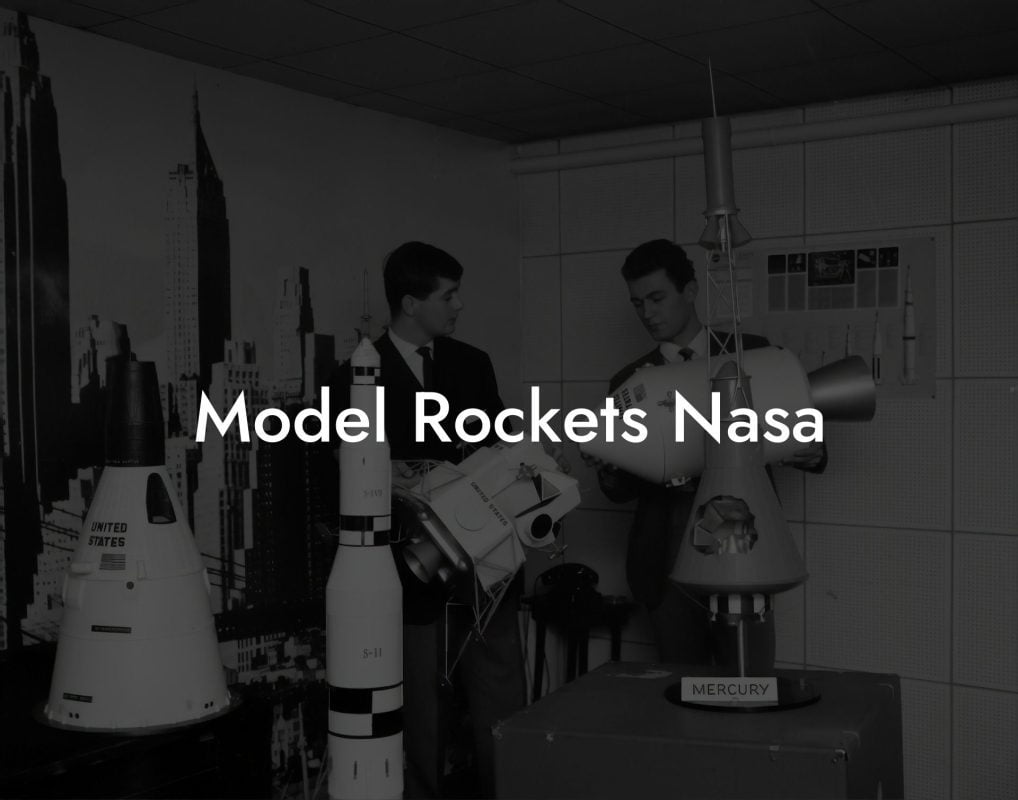Imagine soaring to new heights with your very own model rocket, powered by a fuel that you created yourself. Welcome to the world of model rocketry, where the thrill of launching your own spacecraft meets the excitement of hands-on experimentation. In this comprehensive guide, we'll take you on a journey to create simple rocket fuel for your model rockets, exploring the science behind it and providing you with the tools and techniques to get started.
Quick Links to Useful Sections
What is Rocket Fuel, Anyway?
Rocket fuel, also known as propellant, is a crucial component of any rocket system. It's responsible for generating the thrust needed to propel your model rocket into the air. The fuel is typically a combination of two main components: a fuel and an oxidizer. When these two components are mixed and ignited, they produce a chemical reaction that releases a massive amount of energy, generating the thrust required to launch your rocket.
In model rocketry, the most common type of fuel is a solid fuel, which is a mixture of a fuel and an oxidizer in a solid form. The fuel is typically a sugar-based substance, while the oxidizer is usually potassium nitrate. When ignited, the fuel and oxidizer react to produce a rapid release of gas, generating the thrust needed to launch your rocket.
The Science Behind Rocket Fuel
So, how does rocket fuel actually work? The process is based on a fundamental principle of chemistry called combustion. Combustion is a chemical reaction between a fuel and an oxidizer that releases energy in the form of heat and light. In the case of rocket fuel, the fuel and oxidizer are mixed together and ignited, producing a rapid release of energy.
The key to creating a successful rocket fuel is finding the right balance between the fuel and oxidizer. If there's too much fuel, the reaction will be too slow and won't generate enough thrust. If there's too much oxidizer, the reaction will be too fast and may even cause the rocket to explode. The ideal ratio of fuel to oxidizer is critical to achieving the perfect balance of power and control.
Looking For The Best Model Rocket Kits? You'll Love These:
Materials Needed to Make Simple Rocket Fuel
Making simple rocket fuel is a relatively straightforward process that requires just a few basic materials. Here's what you'll need:
- Sugar (granulated or powdered)
- Potassium nitrate (available at most hardware stores or online)
- Water
- A mixing bowl and spoon
- A scale or measuring cups
Optional materials include:
- Clay or ceramic powder (to improve the fuel's burn rate and stability)
- Paraffin wax or other binding agents (to improve the fuel's consistency and durability)
Step-by-Step Guide to Making Simple Rocket Fuel
Now that you have all the necessary materials, it's time to start making your simple rocket fuel. Follow these steps carefully to ensure a safe and successful process:
- Measure out the sugar and potassium nitrate according to your desired ratio (a common starting point is 65% sugar and 35% potassium nitrate).
- Mix the sugar and potassium nitrate together in a bowl until they're well combined.
- Gradually add water to the mixture, stirring until it forms a thick paste.
- If desired, add clay or ceramic powder to the mixture to improve the fuel's burn rate and stability.
- If desired, add paraffin wax or other binding agents to the mixture to improve the fuel's consistency and durability.
- Mix the fuel thoroughly until it's smooth and consistent.
- Transfer the fuel to an airtight container and store it in a cool, dry place.
That's it! Your simple rocket fuel is now ready to use in your model rockets.
Tips and Safety Precautions
When working with rocket fuel, it's essential to follow proper safety precautions to avoid accidents and injuries. Here are some tips to keep in mind:
- Always wear protective gear, including gloves, safety glasses, and a face mask, when handling rocket fuel.
- Work in a well-ventilated area, away from open flames or sparks.
- Keep the fuel away from children and pets.
- Store the fuel in an airtight container in a cool, dry place.
- Never smoke or use open flames near the fuel.
- Follow proper launch procedures when using your model rocket, and always have a fire extinguisher nearby.
By following these tips and safety precautions, you can ensure a safe and enjoyable experience with your model rockets.
Resources and community Support: Your Next Steps
Congratulations on making it this far! You now have the knowledge and skills to create your own simple rocket fuel for your model rockets. But don't stop here – there's a whole world of model rocketry waiting to be explored.
Here are some resources and community support to help you take your model rocketry to the next level:
- Online forums and communities, such as Reddit's r/modelrockets and r/rocketry
- Model rocketry clubs and organizations, such as the National Association of Rocketry (NAR)
- Books and tutorials on model rocketry and rocket propulsion
- Local hobby shops and suppliers for model rocketry materials
Join the community, share your experiences, and learn from others to continue improving your skills and knowledge in model rocketry.
Frequently Asked Questions
Here are some frequently asked questions about making simple rocket fuel for model rockets:
1. Is making rocket fuel safe?
Yes, making rocket fuel can be safe as long as you follow proper safety precautions and handle the materials with care.
2. What's the best ratio of sugar to potassium nitrate?
The ideal ratio of sugar to potassium nitrate can vary depending on the specific application and desired performance. A common starting point is 65% sugar and 35% potassium nitrate.
3. Can I use other types of fuel?
Yes, there are many other types of fuel that can be used in model rockets, including liquid fuels and hybrid fuels. However, solid fuels like the one described in this guide are the most common and easiest to work with.
4. How do I store my rocket fuel?
Store your rocket fuel in an airtight container in a cool, dry place, away from children and pets.
5. What's the best way to launch my model rocket?
Always follow proper launch procedures, including using a stable launch pad, ensuring the rocket is securely attached, and having a fire extinguisher nearby.
Looking For The Best Model Rocket Kits? You'll Love These:
Useful Interruption: Dive deeper into the world of Model Rockets with our most popular sections. If there is anything you think is missing or anything you would love for us to write about, just give us a shout.
- Getting Started & Basics With Model Rockets
- Model Rocket Design, Build & Customization
- Model Rocket Propulsion & Engine Technology
- Model Rocket Launch Techniques & Recovery
- Model Rocket Advanced Rocketry & Innovations
- Model Rocket DIY and Customization
- Model Rocket Equipment Reviews & Digital Tools
- Community, Competitions & Education
- Model Rocket Troubleshooting & FAQs
- Model Rocket Bonus/Seasonal & Niche Topics
A group of model rocket enthusiasts gathered at a field for their weekly launch event. Among them was Dave, a seasoned builder known for pushing the limits of hobby rocketry. This time, he had outdone himself.
“Ladies and gentlemen,” Dave announced, dramatically pulling a cloth off his latest creation, “I present to you: The Kraken!”
The crowd gasped. This wasn’t just a model rocket, it was a monster. The thing stood 8 feet tall, had six clustered engines, and was covered in enough duct tape to qualify as a classified aerospace project.
“Dave,” muttered Steve, the cautious safety officer, “Have you, uh… done the math on this?”
“Math?” Dave scoffed. “I built it in my garage at 3 a.m. with parts from eBay. This is an art piece, Steve.”
The countdown began.
5…
4…
3…
2…
1…
The engines ignited with a BOOM, and The Kraken shot up… kind of. It immediately did a violent barrel roll, narrowly missing the spectators before skyrocketing at an angle that could only be described as “legally questionable.”
The crowd collectively ducked as The Kraken flew straight over the adjacent cornfield, where Old Man Jenkins, the grumpiest farmer in town, was minding his business.
KABOOM!
The rocket disappeared behind the barn. A moment later, a flaming piece of Estes igniter wire landed at Steve’s feet. The silence was deafening.
And then, an unmistakable sound echoed across the field.
Jenkins’ shotgun being cocked.
“DAVE!!!” Steve shouted. “RUN.”
And that was the day Dave invented the first-ever biologically powered rocket booster: pure adrenaline.
To this day, nobody knows where The Kraken landed, but legend has it, it still haunts the skies, terrifying unsuspecting drones and low-flying birds.















